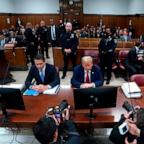Kimbo Slice will be remembered for his improbable rise to popularity
— -- The exact time and place may differ from person to person, but the portal in which Kimbo Slice first became part of our collective consciousness was likely the same: YouTube, roughly a decade ago, prompted by a friend's instruction to type "backyard street fight" into the fledgling video site's search engine.
The results were raw, grimy and violent. Slice, born Kevin Ferguson, forced random tough guys with names like "Dreads" and "Chico" into submission with the loud popping of his bare hands. The fights, staged for cash throughout backyards and empty parking lots in Miami, produced unforgettable emotions for each viewer.
In fact, for many, there was a competing element to the emotions at play, alternating between excitement, fear and shame. Years before Billy Corben's documentary "Dawg Fight" shined a light on the culture of Miami street fighting, the character of Kimbo Slice provided an unforgettable introduction.
A little more than a decade later, following a meteoric rise as a professional fighter (running the gamut from sideshow to legit, and back again), Slice died on Monday in South Florida at the age of 42. Details of his death remain unclear.
Given his backstory, Slice's MMA run is nothing short of remarkable, progressing from backyards to the UFC in record time despite the fact that he didn't pick up the sport until his mid-30s. It's a testament to the reason why we couldn't take our eyes off him from the beginning: Slice was a legit tough guy who was born to be a fighter, and despite some of the bizarre moments that followed, he never stopped being true to that identity.
Born in the Bahamas in 1974, Slice battled poverty in Miami and was later homeless in his adult life after an injury brought an end to his college football dreams. He found work in strip clubs and eventually as a bodyguard in the adult film industry.
Everything about him felt alarmingly real. Slice's backyard fights brought a certain element of fear through the screen that's hard to explain and hasn't been seen since the days of Mike Tyson. While no one would mistake comparing the abilities of the two, they shared that unavoidable element of raw transparency as to who they really were.
It's hard to imagine Slice's trademark look -- or his combination of bald head, braided hair on the sides and mini ponytail in the back -- would have worked for anyone else. But he pulled it off (complete with his pioneering chest-hair designs) in part because we wanted so badly to believe it.
With his thick beard, gold teeth and chains, Slice was a comic book and action movie villain put together, yet it seemed he was never really trying to play that character. While other fighters have borrowed elements from pro wrestling in an attempt to add legitimacy to their toughness, Slice never filled the silence with unnecessary trash talk. In fact, it was because of his quiet demeanor that his tough aura felt so authentic.
Slice's legacy as a fighter, however, is complicated, if not unique. Many fans never looked at him as anything more than a joke -- or ratings bait -- who received headlining bouts simply because of his marketability. Yet it would be unfair to discredit the importance of his run -- particularly in prime time on CBS with Elite XC -- in terms of bringing MMA into the living rooms of the casual fan. It would also be unfair to suggest he was never promoted as anything more than an "attraction."
He rebounded from a potentially disastrous 14-second loss to late replacement Seth Petruzelli in 2008 and won back the respect of the MMA community by quickly transitioning into a real fighter, joining the UFC through "The Ultimate Fighter" reality series. His blue-collar work ethic endeared him to fans who could relate to the underdog element of his "everyman" run from the backyard to the UFC's Octagon.
But Slice's UFC career proved to be short-lived. So was his forgettable seven-fight run as a pro boxer, which prompted similar whispers of improper matchmaking that followed him at each stop of his MMA career.
Which brings up an interesting dynamic: For as celebrated as Slice was for how real his persona came off, he constantly fought off rumors that his actual fights were the opposite (despite nothing ever being proved). His final victory in February, over former backyard rival Dhafir "Dada 5000" Harris, was also overturned when he tested positive for performance-enhancing drugs.
But Slice's true legacy surrounds his unrivaled ability to attract viewers. He fought James Thompson on CBS in 2008 in front of 6.51 million viewers. One year later, his UFC debut, an exhibition fight against Roy Nelson on "The Ultimate Fighter" on Spike TV, peaked at 6.1 million. In 2015, he made a return to MMA with Bellator, twice setting company ratings records on Spike TV.
Slice will never be confused with an elite or title-contending fighter, but he made us care about his journey in a way that's remarkable for a guy whose public identity was carved in gritty bare-knuckled combat.
As his recent ratings might suggest, we never stopped caring, and considering his indelible mark on both pop culture and MMA in general, I doubt we ever will.




